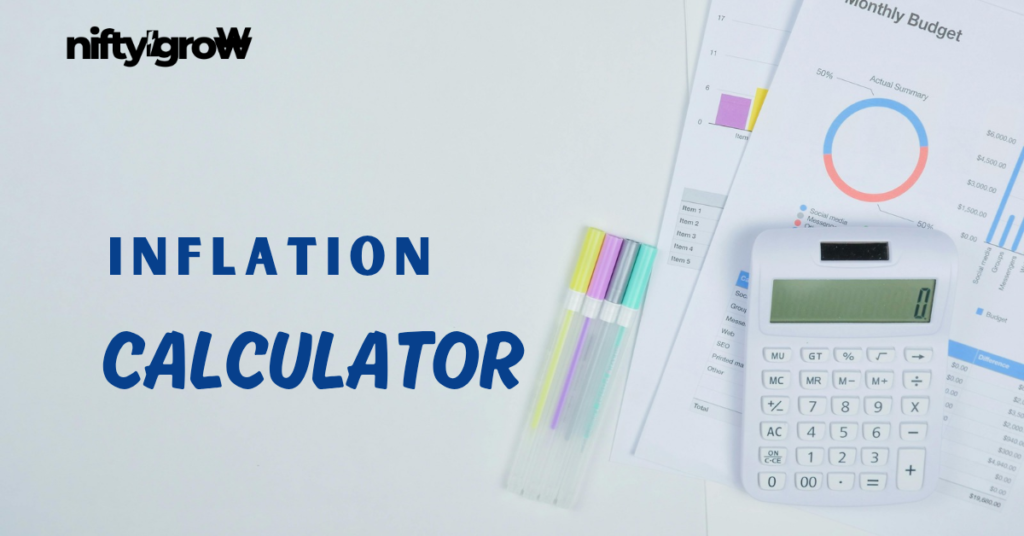Inflation Calculator
Future Value
Zero
Loss in Value
Zero
Inflation Calculator Secrets: 5 Powerful Ways to Master Your Financial Future
Inflation calculator tools are game-changers when it comes to understanding the real value of your money over time. If you’ve ever wondered why your paycheck doesn’t stretch as far as it used to or why that dream vacation seems to cost more every year, inflation is likely the culprit. But don’t worry—there’s a way to stay ahead of the curve. By using an inflation calculator, you can unlock insights that help you plan smarter, save better, and invest wisely.
In this article, we’ll dive deep into the world of inflation calculators, exploring what they are, why they matter, and how you can use them to take control of your financial destiny. From budgeting for life’s big moments to preparing for retirement, these tools are your secret weapon. Ready to master your money? Let’s get started with five powerful ways an inflation calculator can transform your financial life.

What Is an Inflation Calculator and Why Should You Care?
An inflation calculator is a tool that adjusts the value of money over time based on inflation rates. It tells you how much a dollar today is worth compared to a dollar in the past—or what it might be worth in the future. Think of it as a time machine for your finances, helping you understand purchasing power across decades.
Why does this matter? Inflation erodes the value of money. According to the U.S. Bureau of Labor Statistics, the average annual inflation rate in the U.S. has hovered around 3% over the past century. That might sound small, but over time, it adds up. For example, $100 in 2000 is worth only about $67 today in real terms. Without tools like an inflation calculator, it’s easy to underestimate how inflation impacts your savings, investments, or even daily expenses.
By using an inflation calculator, you can:
- Plan for major purchases like a home or car.
- Estimate how much you’ll need for retirement.
- Understand the true cost of loans or investments over time.
Let’s explore how you can put this tool to work with five practical strategies.
1. Budget Smarter with an Inflation Calculator
When you’re creating a budget, it’s tempting to focus only on today’s prices. But costs don’t stay static. Whether you’re saving for a wedding, a new car, or your kids’ college fund, inflation will impact your goals. That’s where an inflation calculator shines.
How to Use an Inflation Calculator for Budgeting
Start by identifying your financial goal and its timeline. Let’s say you’re planning to buy a $50,000 car in 10 years. Plug these numbers into an inflation calculator to estimate the future cost. Assuming a 3% annual inflation rate, that car could cost around $67,195 in a decade. Knowing this helps you set realistic savings targets today.
Pro tip: Use our savings goal planner alongside an inflation calculator to map out your monthly contributions. This combo ensures you’re not caught off guard by rising prices.
Real-Life Example
Meet Sarah, a 30-year-old saving for her dream wedding. She estimates needing $20,000 in five years. Using an inflation calculator, she learns that amount could balloon to $23,860 with 3.5% inflation. By adjusting her savings plan now, Sarah avoids scrambling later.
External resource: For more budgeting tips, check out NerdWallet’s budgeting guide.
2. Plan for Retirement with Confidence
Retirement planning is one of the most critical uses of an inflation calculator. If you’re dreaming of a cozy retirement in 20 or 30 years, you need to know how much your lifestyle will cost in the future. Spoiler alert: It’s probably more than you think.
Why Inflation Matters for Retirement
Let’s say you estimate needing $60,000 per year to retire comfortably today. With inflation, that number could double in 25 years. An inflation calculator helps you project these costs so you can save and invest accordingly.
For example, the Social Security Administration adjusts benefits for inflation, but those increases often lag behind real-world costs like healthcare. By using an inflation calculator, you can estimate gaps in your retirement income and plan to fill them with investments or side hustles.
Actionable Steps
- Estimate your current retirement expenses.
- Use an inflation calculator to project those costs to your retirement year.
- Work backward to determine how much you need to save annually.
- Explore our retirement planning toolkit for personalized advice.
By planning with inflation in mind, you’ll avoid the shock of outliving your savings.
3. Make Smarter Investments
Investing is all about growing your wealth faster than inflation can erode it. But how do you know if your investments are keeping up? An inflation calculator can help you evaluate the real return on your portfolio.
Calculating Real Returns
Your investments might show a 7% annual return, but if inflation is 3%, your “real” return is only 4%. An inflation calculator lets you adjust past or projected returns to see if you’re truly beating inflation.
For instance, if you invested $10,000 in a stock portfolio 10 years ago and it’s now worth $18,000, an inflation calculator can tell you how much of that growth is actual wealth versus inflation-driven price increases.
Investment Tools to Pair with an Inflation Calculator
Combine your inflation calculator with tools like:
- Morningstar’s portfolio tracker to monitor returns.
- Our investment growth calculator to forecast future gains.
By understanding real returns, you can choose investments—like stocks or real estate—that historically outpace inflation.
4. Negotiate Salaries and Raises with Data
Inflation doesn’t just affect your savings—it impacts your income too. If your salary isn’t keeping up with inflation, you’re effectively earning less each year. An inflation calculator can arm you with hard data to negotiate a raise or evaluate job offers.
How to Use an Inflation Calculator for Salary Talks
Let’s say you earned $50,000 five years ago. With 3% annual inflation, that salary should be about $58,000 today to maintain the same purchasing power. If your current pay hasn’t budged, it’s time for a conversation with your boss.
Bring an inflation calculator’s results to the table (discreetly, of course) to show how inflation has eroded your earning power. Pair this with evidence of your contributions, and you’ve got a compelling case.
Bonus Tip
Check out Glassdoor’s salary negotiation guide for expert advice on closing the deal.
5. Understand the True Cost of Debt
Debt can feel like a ball and chain, especially when inflation complicates things. An inflation calculator helps you see the real cost of loans over time, so you can decide whether to pay them off early or invest instead.
Inflation and Debt Dynamics
Here’s a twist: Inflation can sometimes work in your favor with fixed-rate debt. If you have a 4% mortgage and inflation rises to 5%, the real cost of your loan decreases because you’re paying back cheaper dollars over time. An inflation calculator helps you quantify this effect.
On the flip side, variable-rate loans or credit card debt can spiral if inflation drives up interest rates. Use an inflation calculator to estimate future payments and prioritize high-interest debt.
Practical Example
Suppose you have a $200,000 mortgage with 20 years left. An inflation calculator shows that in today’s dollars, the loan’s real cost shrinks over time with steady inflation. This insight might convince you to invest extra cash instead of overpaying the mortgage.
For more debt strategies, visit our debt payoff planner.
Common Mistakes to Avoid with an Inflation Calculator
While an inflation calculator is incredibly useful, it’s not foolproof. Here are pitfalls to watch out for:
- Assuming Constant Inflation Rates: Historical averages (like 3%) are helpful, but inflation can spike unexpectedly. Check recent trends on the Federal Reserve’s website.
- Ignoring Regional Differences: Inflation varies by location. A New York City calculator might show higher rates than one for rural areas.
- Forgetting Taxes: Inflation calculators don’t account for taxes, which can further erode your purchasing power.
By using the tool thoughtfully, you’ll get more accurate results.
Interpretation: Why Inflation Calculators Are Essential Today
Inflation calculators aren’t just number-crunchers—they’re windows into your financial future. In an era of rising prices, understanding inflation’s impact is non-negotiable. Whether you’re a young professional saving for your first home or a retiree stretching a fixed income, these tools help you make informed decisions.
The data speaks for itself: From 2020 to 2025, global inflation surged due to supply chain issues, energy costs, and economic recovery efforts post-COVID. The World Bank reported inflation rates hitting decade-highs in many countries. Without an inflation calculator, it’s nearly impossible to gauge how these trends affect your personal finances.
By integrating an inflation calculator into your planning, you’re not just reacting to price changes—you’re anticipating them. This proactive approach builds confidence and resilience, no matter what the economy throws your way.
Conclusion: Take Control with an Inflation Calculator Today
An inflation calculator is more than a tool—it’s your financial co-pilot. By revealing how inflation shapes your money’s value, it empowers you to budget smarter, invest wisely, plan for retirement, negotiate better, and manage debt strategically. The five strategies we’ve covered—budgeting, retirement planning, investing, salary negotiations, and debt management—are just the start.
Ready to dive in? Try our free inflation calculator to see how your money stacks up over time. Pair it with our other resources, like the financial goal tracker, to build a roadmap to success.
Don’t let inflation catch you off guard. With an inflation calculator in your toolkit, you’re not just keeping up—you’re staying ahead. What’s your next financial goal? Let us know in the comments, and let’s tackle it together!




